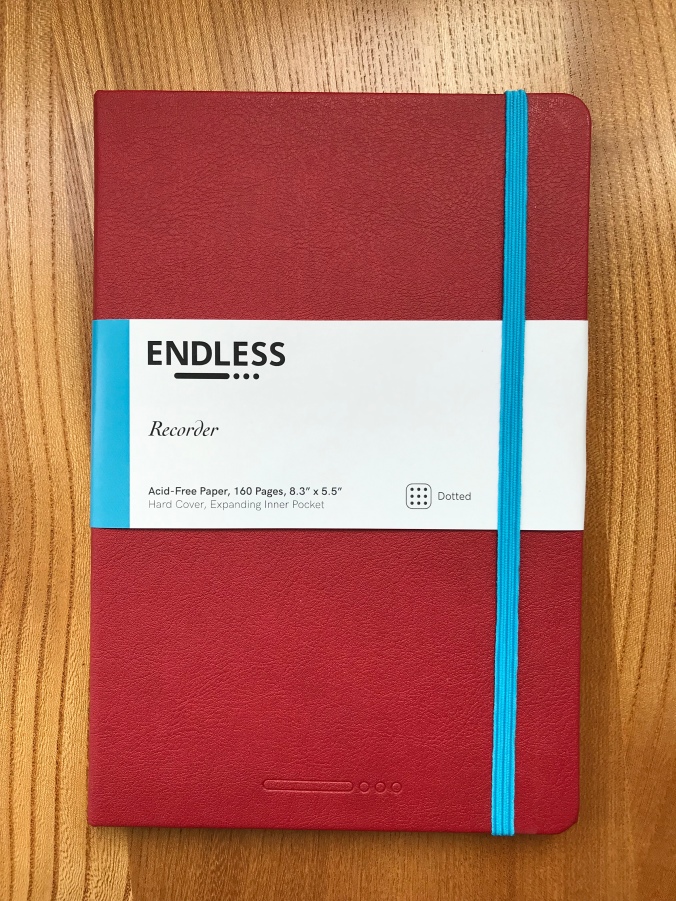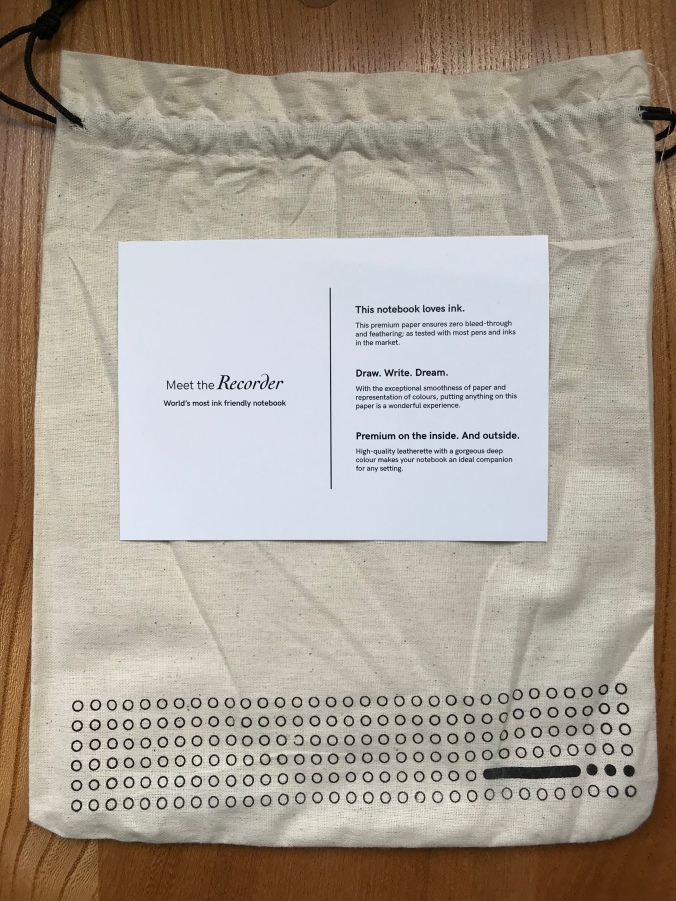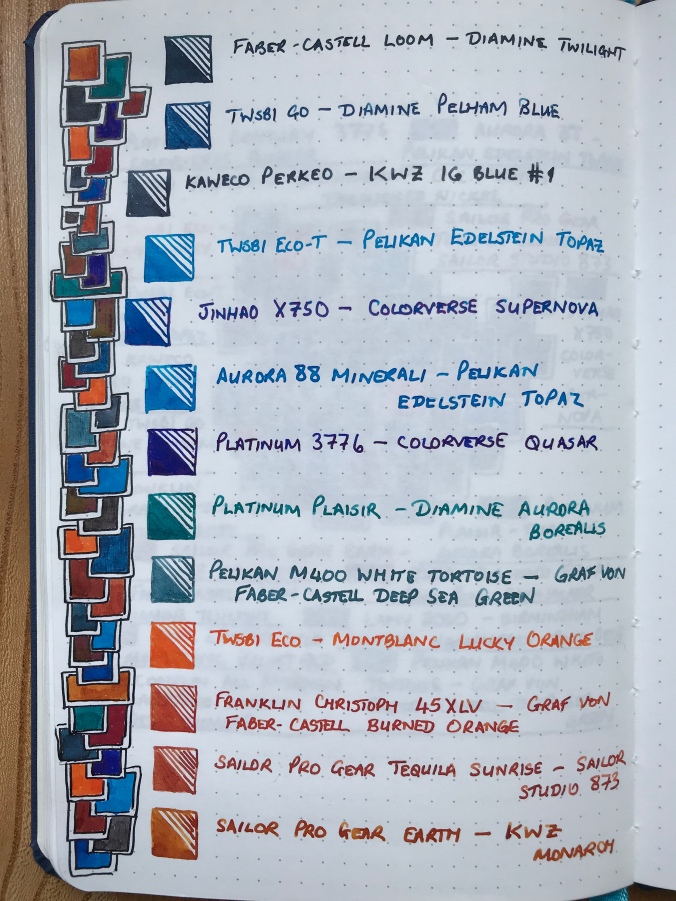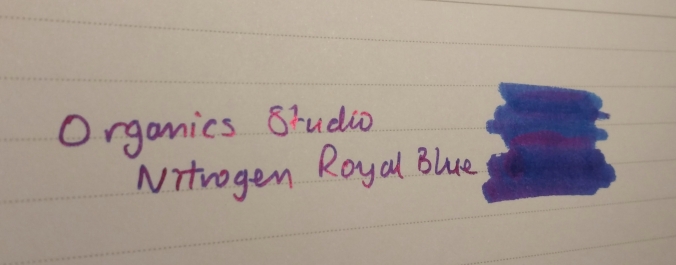If you have more than a passing interest in fountain pens, chances are that you will have at least heard of Tomoe River paper. You may have tried it. You may love it or you may wonder what all the fuss is about. I’m firmly in the “love it” camp and have been on a bit of a Tomoe River kick in the past few months.
One of my last notebook reviews was of the Endless Recorder – a hardback A5 notebook based on 68gsm Tomoe River (TR) paper. In that review, I wished that the growth in people making Tomoe RIver notebooks would extend from 68gsm, where all the action seemed to be, down to the thinner 52gsm version (which I much prefer).
My theory is that the 52gsm TR is so prone to creasing and damage from handling that notebook makers have shied away from it. Recent experience suggests that might be changing. It would be nice to think that someone saw my plea and took pity on me, but in all likelihood, it’s just coincidence. Either way, over the past few months, the opportunity has come my way to acquire some hardback A5 notebooks based on 52gsm TR paper.
Chronologically, the first of these to come my way came with a chunk of air miles and something of a guilt trip about the accompanying carbon footprint.
The books in question came from Pebble Stationery. I first came across this company when I bought one of their 52gsm TR pocket notebooks from Nero’s Notes. Since then, Pebble have extended their regular range to include a soft cover A5 book, which is quite widely available. What caught my eye was a post in Pebble’s Instagram feed of some A5 hardback books, covered with decorative Chiyogami paper (another favourite of mine).

Can you judge a book by its cover?
Missing out first time round taught me that these handmade books come up as small batches and don’t hang around for long when they do. I presume this is why they don’t appear for sale through their regular distributors. As a result, I ended up ordering direct from Pebble which, of course, meant ordering from Australia.
If you’ve ever bought a notebook containing TR paper, you’ll know they’re not the cheapest. Assessing the value for money of these books is not easy, but to me they’re worth the expense. The Pebble Chiyogami books weigh in at AUS$28 (about £14 at current exchange rates) for 200 pages in A5 size. The downside is their location – I had two of them shipped from Australia and the shipping cost almost as much as a single notebook!
In terms of structure and features, the Pebble Chiyogami books are pretty straightforward and minimalist, but I don’t mean that in any negative sense. The paper is sewn in small signatures and traditionally bound. From my experience (n=2), the end papers are chosen to compliment the cover papers – white for the geometric pattern on one and black for the dragonfly design on the other. Page corners are left square. In terms of extras, you get a ribbon page marker, but no back cover pocket or index pages.

Simple, beautiful binding

Square corners are the order of the day
The books are bound by hand, and the website description warns of possible imperfections and creases. The books I bought were both executed to a very high standard, with no noticeable flaws. I’ve finished one of them and didn’t find a dud page anywhere. The binding is very tight, which means that some gentle persuasion was needed at first to get the book to open flat. After that, I had no issue whatsoever and the book held together without any signs of structural issues. The Chiyogami paper that I’ve handled has never felt like it was robust enough to survive for long as the cover on a notebook, and I think the covers of the Pebble notebooks are coated with something to make them more durable. It changes the feel slightly, but is no bother and worth it in terms of making the covers more durable.
What’s inside?
You can have any page layout option you want, as long as what you want is blank. This is not uncommon with handmade TR notebooks and not something I’d penalise Pebble for. I’m learning to embrace the blank page and use a guide sheet to stop my crappy lefty handwriting nosediving as I work across the page. With hindsight, it might have been nice to have a guide sheet included with the book, but I just used one from another book so it’s hardly a major issue.
Getting down to use, I could say there’s nothing much to report. The properties of 52gsm TR paper are described extensively and it is my absolute favourite paper to write on. It’s unfeasibly thin, but will take pretty much any ink from any nib in any fountain pen with no feathering or bleed through. If you want to show off shading and sheen in your inks, then this is the paper to do it with. Both my Pebble books came with off-white/cream paper, but that’s fine as I prefer it to pure white. The base colour of the paper does affect how some inks look (compared to pure white paper), but you can have great fun figuring out which inks work best!

There might be a hint of sheen here!
Heretics Detractors will point out the ghosting (show through) and long dry times. The first is simply a function of the thinness of the paper, and you’ll have to decide whether you can live with that or not. I have 2 words for the second – BLOTTING PAPER! In practice, I find I only need to use blotting paper when I’m about to turn a page, so it’s more backup than absolute necessity.
Summary
I know I’m biased, but these Pebble Chiyogami notebooks are beautiful to look at and skilfully made (by hand) to show off some wonderful Japanese papers. If none of these elements are your thing, you’ll probably find richer pickings elsewhere. If you like 52gsm Tomoe River paper, these books are a great platform to showcase its properties. Sure they’re not cheap, but I think the pricing is reasonable and if you want to know what an expensive TR paper notebook looks like, check out Musubi!
One thing I did like about the Pebble notebooks was the page count. Pebble have avoided the tendency of some 52gsm TR books to counter the thinness of the paper by having a huge page count. 200 pages makes for a manageably slim book that’s easy to write in and transport.
I think high page counts can create practical and psychological problems. Physically, a notebook that is too thick can be uncomfortable to write in, especially as you get towards the bottom of the page. Everyone’s tolerances are different, but something resembling a telephone directory will be a challenge. Psychologically, a book with a high page count can seem a bit daunting to start and can become a marathon chore to complete.
My journaling has become a bit sporadic of late and I found the Pebble notebook to be just about right in this respect – easy to handle, long-lasting enough to justify its price tag but not so long that I came to resent using it.
Do I recommend these books – yes, absolutely!
Will I buy more of these? Honestly, I’m not sure. I have loved owning and using these books, but the relative cost associated with having to ship them half way round the world is a bit of an issue for me. If these books were available through a local distributor such as Nero’s, I’d have no qualms in buying them regularly. This point comes into starker relief following my discovery of Flyght of Fantasy Studio notebooks at the Bristol pen show earlier this year. Based in Scotland, they hand make notebooks using 52 and 68gsm TR paper and cover the books in some amazing Japanese and Japanese-inspired fabrics. OK, these have a higher page count (and proportionately higher price tag) than the Pebble notebooks but, in other respects, I’ve may well have found a way to feed my addiction to eye-catching TR paper notebooks from more local sources.

























































